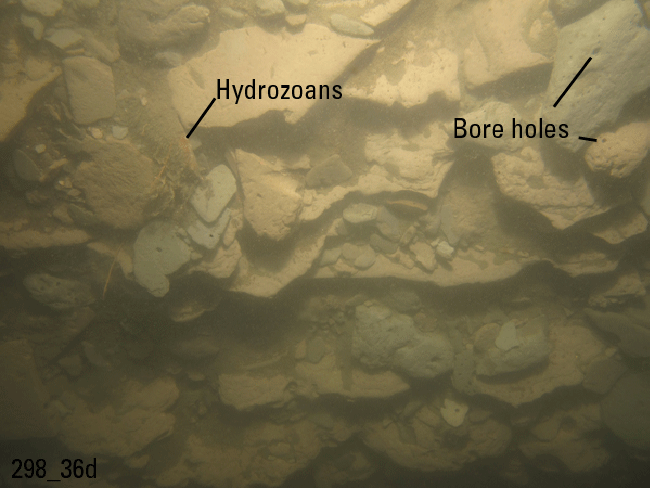Open-File Report 2014-1224
![]() Title |
List of Figures |
Conversion Factors |
Abstract |
Introduction |
Setting |
Methods |
Bathymetry |
Sidescan Sonar |
Sediments |
Bottom Photography |
Interpretation |
GIS Data Catalog |
Summary |
Acknowledgments |
References |
Contacts |
Index
Title |
List of Figures |
Conversion Factors |
Abstract |
Introduction |
Setting |
Methods |
Bathymetry |
Sidescan Sonar |
Sediments |
Bottom Photography |
Interpretation |
GIS Data Catalog |
Summary |
Acknowledgments |
References |
Contacts |
Index
 |
||
Figure 23. Photograph from station 298_36 showing an outcrop and rip-up clasts of silty clay that make up the steep eastern wall of Deep Hole, the largest and deepest bathymetric depression within the study area. The varved glaciolacustrine sediment, which has been exposed by erosion, is composed of alternating layers of gray and reddish brown sediments that cleave into clasts. The clasts have bio-eroded bore holes in them and hydrozoans are present. Photograph location is shown in figure 25. |
||